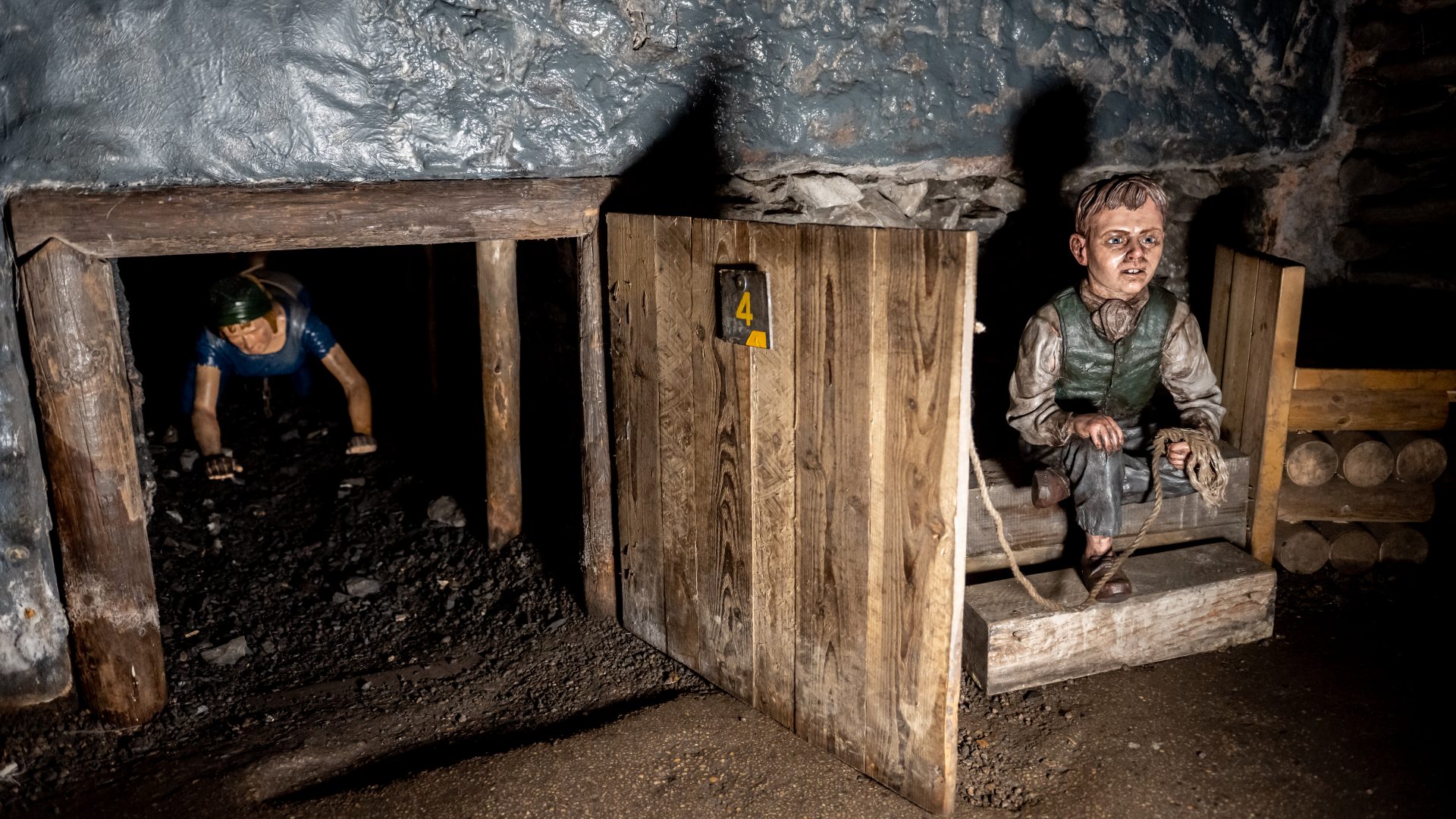Voices in the Coalshed: What d’you want to be?

Have you ever asked a youngster, “What d’you want to be?” In the past there was little option. You followed your father or your “da,” down the pit!
About two hundred years ago life was very different for miners (colliers) and their families. Though the jobs were very similar, the names were quite different, yet graphic.
Take the youngest: a trapper – who did exactly that – trapped poisonous air (choke-damp/carbon dioxide) from travelling from one shaft to another. Approximately five years old, the young child would sit in a darkened space while he/she would open and close the trapdoor (ventilation doors) to let coal wagons (corf/corves) pass on underground tracks.
Bearers – at first, older girls and women – carried heavy, wicker baskets of coal on their backs away from the coal face for their father.
Later, the young boys and girls would work for their fathers pushing or pulling coal-loaded carts along cart tracks to the shaft bottom. They were also referred to as carters, drawers, hurriers and even thrusters.
They were sometimes paid according to the distance they hurried – a clear description of their hard existence working along very low passages (often under a metre.) Women and children were often used instead of men because of the very low restrictive passages. They worked 12 hours a day, six days a week. William Firth working at Dial Wood Pit at Flockton spoke of his miserable life:
“I hurry with my sister and they pay me sometimes. I don’t like to be in the pit. It tires me great deal. I was crying to go out this morning.”
The women and girls would wear a gus – a belt around the waist with a chain which would pass between the legs and hook onto the tub. Eventually (after 1842 Act) women and all children under ten were replaced by pit ponies – again chosen for their ability to haul through low passages.
The hewer (miner/collier) was the coal face worker. Aged from 21 to 70, they cut and loosened the coal with a pick. In 1849, He would work 8 hours a day, 4 to 5 days for a wage of 19p (3s 9d) to 22p (4s 3d). The job was so exhausting that some even found it too hard to get home after a shift and fell asleep on the way.
How do we know? From the Inspector reports of Victorian Times, from the illustrations and slogans on individual colliery banners and from you, who pass on your stories and help keep our heritage alive.
By Volunteer Lesley